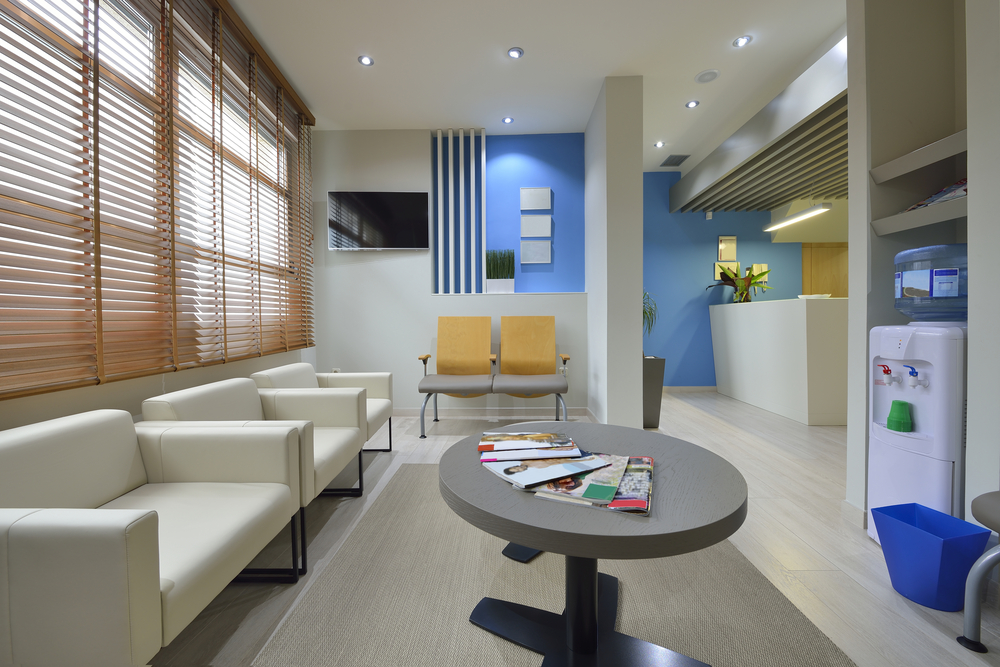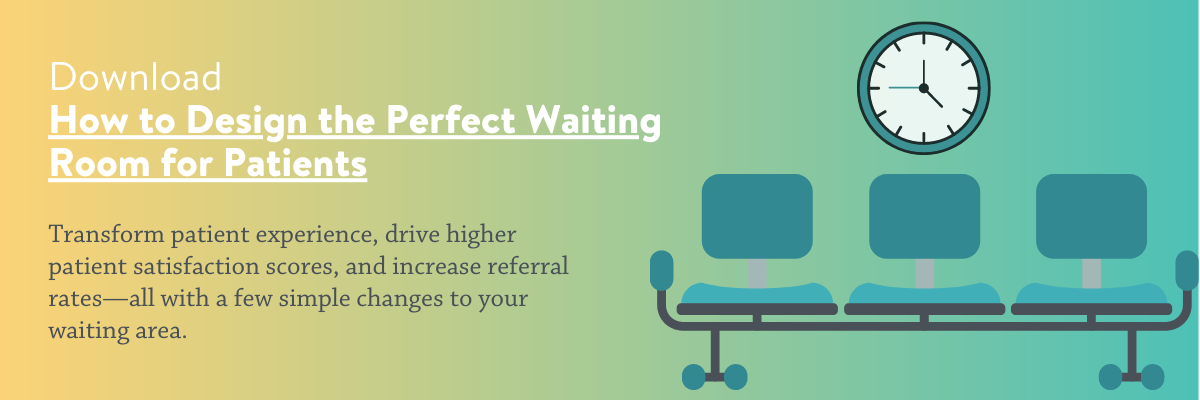Research on hospital design has found that elements such as lighting and layout can reduce medical errors, lower stress levels among staff and patients, and promote faster healing with fewer infections, less pain, and reduced reliance on drugs. These benefits can be realized through the design of doctors’ offices, too. Here are some things to think about when it comes to your practice’s layout and design — ranging from the appearance of your waiting room to the way you integrate technology into the exam room. You make not be able to make all of these changes immediately, but even small modifications can make a difference.
1. Make the wait comfortable
Your waiting room is the first impression patients have of your practice. Make sure it is inviting and comfortable. Provide chairs with good support and sturdy arms (particularly helpful for older patients), and consider offering a coffee/tea station. Many patients want to be productive during their wait, so aim to provide free Wi-Fi and make patient education materials prominent and accessible.
Ideally, of course, patients should not spend a lot of time in the waiting room. “If you have a really large waiting room, you’re probably not running your business correctly,” Bashir Zivari, an architect for a firm specializing in medical facilities, told WNPR. If you notice that patients regularly spend more than the average 20-minute wait time there, your focus should be on improving your efficiency and workflow, rather than on making your waiting room more appealing.
2. Use exam space wisely
In the exam room, smart design changes may include flexible furniture that can meet your needs but takes up less space. This is just one of the design elements proposed in the Primary Care Office of the Future Exhibit, a project of the Connecticut Institute for Primary Care Innovation.
3. Bring the outdoors in
Studies dating back decades show that patients recuperating from surgery had shorter stays and took fewer painkillers when their room had a view of trees compared to a view of a brick wall. More recent research suggests that even depictions of nature such as artwork or murals have a positive effect on patients.
Health care facilities are beginning to take cues from spas when it comes to incorporating natural materials, water elements, and other nature-inspired touches into their design. There are many ways doctors’ offices can do this — from using materials like wood and stone to choosing natural color palettes. Fish tanks and natural lighting can improve the look and feel of your space, and certain potted plants (including aloe vera and spider plants) can even improve indoor air quality.
4. Integrate technology — seamlessly
Technology is an important component of modern medical care, and you should carefully consider how best to incorporate it into your office’s design and layout. Previously, we’ve discussed how technology can help or hurt the patient experience, depending on how it is used. “Now that we have introduced electronic [health] records into the visit, many physicians and nurses struggle with how to integrate them,” Rosalyn Cama, president of the design firm CAMA, told Physicians Practice. “They often end up feeling tethered to a piece of equipment or turning their backs on patients while they do data entry. It’s awkward all the way around and can make the patient feel like the clinician isn’t really listening to them.”
Smart design choices can make a difference, she says, such as positioning computers below eye level, and using shared workstations that foster collaboration and better communication among the care team. When possible, especially when educating patients or explaining complicated conditions, doctors should choose technology like a tablet or phablet that can be viewed by both doctor and patient at the same time — without the physical barrier of a computer monitor separating them.
With today’s doctors facing increased patient loads and more demands on their time than ever before, office design may seem low on the priority list. But according to Ann Sloan Devlin, author of the book, Transforming the Doctor’s Office: Principles from Evidence-based Design, good design makes a big difference: “The quality of care is paramount, but I think what health care providers often fail to understand is that the first impressions that we have of doctors often set the stage for the kind of relationship that will ensue,” she notes.


